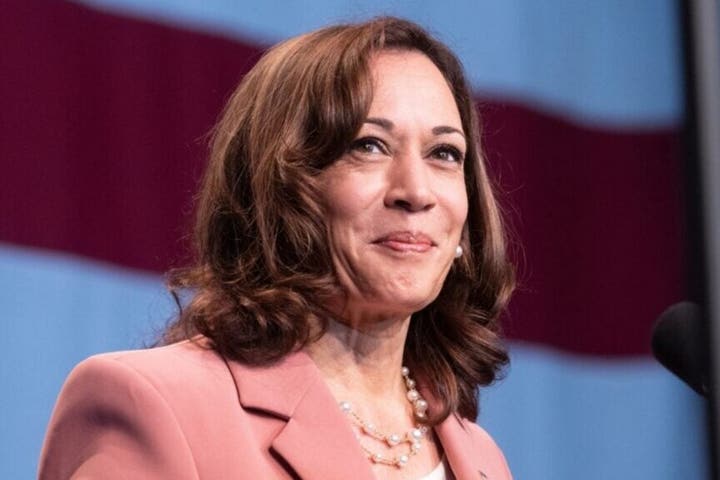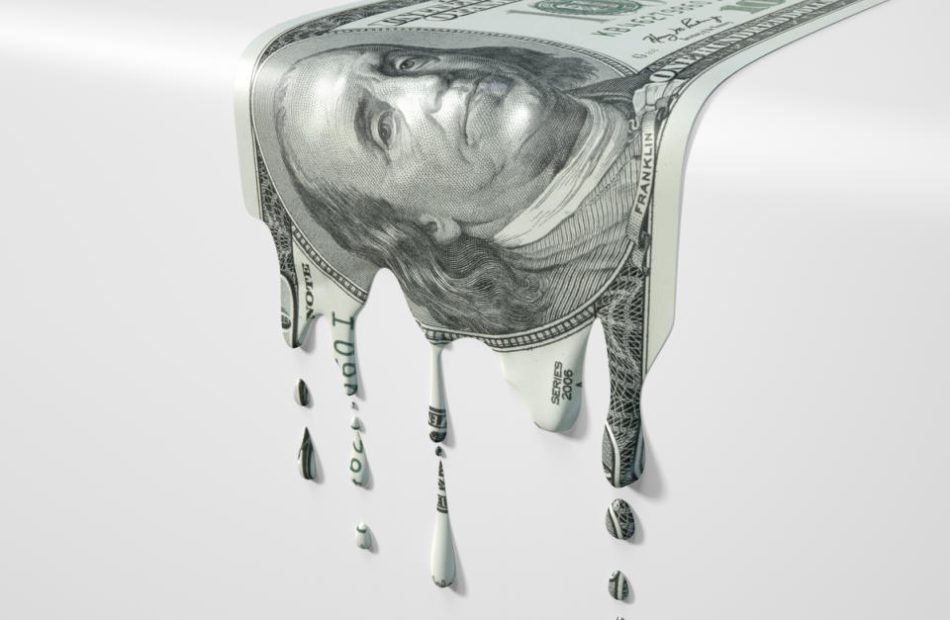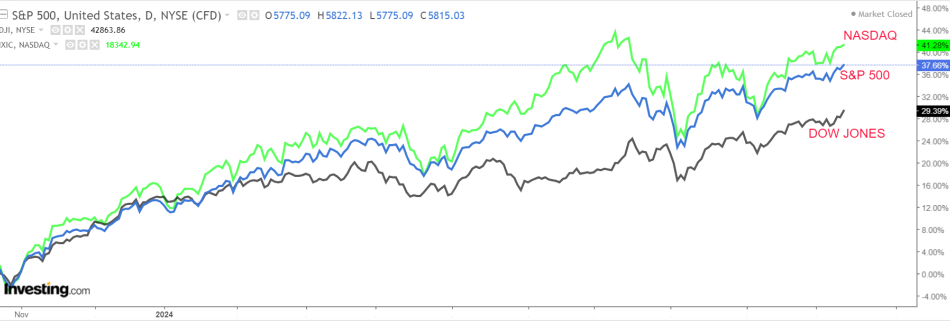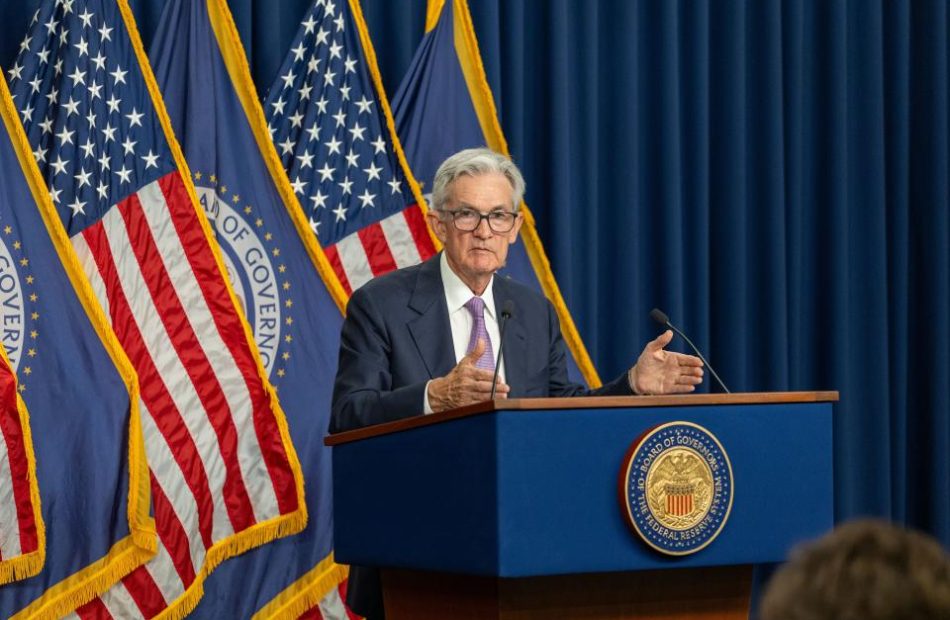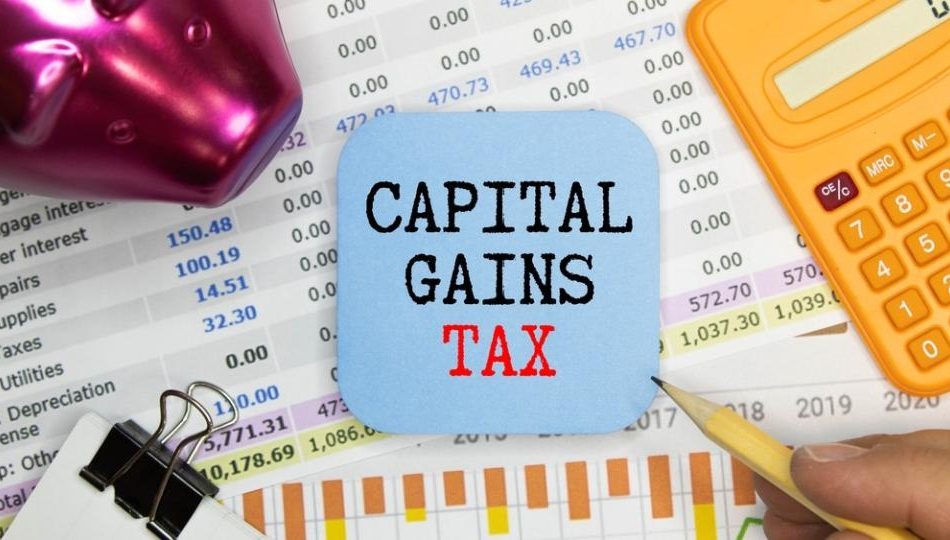2 Software Stocks That Could Help Make You a Fortune
When it comes to outperforming Wall Street, there isn’t a one-size-fits-all approach. Great companies can be stellar investments even if the stock is soaring to all-time highs. You can afford some more uncertainty if the stock’s valuation is lower.
On that note, let me show you examples of these two strategies. Online advertising technologist The Trade Desk (NASDAQ: TTD) is the skyrocketing industry leader, while game development and 3D world building expert Unity Software (NYSE: U) is a turnaround story trading at a deep discount.
Picking up either one of these top-shelf stocks from the software industry could help you beat the Street and make a fortune in the long run. They would do it in very different ways, though.
The soaring success story
I won’t score any points for originality by presenting a bull case for The Trade Desk. The digital advertising specialist is roaring back from nearly three years in a sectorwide market downturn — and leading the recovery from the front.
It’s more than a business success story, too. The Trade Desk helps clients maximize the return on their advertising budgets, which was a welcome quality during the inflation-driven downturn. The same advantage will help healthier ad budgets achieve record results when the inflation pressure finally fades out.
On top of these tactics, The Trade Desk created a technical workaround for the digital advertising sector as a whole. Third-party tracking cookies have been depreciated across most of the leading browsers, and will soon be almost completely unusable for tracking the performance of ad campaigns. The Trade Desk’s Unified ID 2.0 (UID2) achieves similar ad-tracking results while preserving the privacy of individual users.
The Trade Desk is an innovator with a five-star track record in financial results. The stock is exploring all-time highs again after a deep dip during the inflation crisis. I can’t find an industry rival matching The Trade Desk’s strong and consistent revenue growth over the last three years. For that reason, I don’t mind paying a modest premium for the stock today.
The promising turnaround play
Unity Software is a different story. The company used to be an unquestioned leader in its chosen field of business, inspiring hordes of game developers and digital media studios to base their next projects on its software.
But Unity’s management made a serious mistake last year. Former CEO John Riccitiello introduced a so-called runtime fee, charging developers a small fee per installation. The move turned out to be highly controversial, especially in the video game community. Small charges per installation can raise large barriers to entry in a market where many games are distributed for free and make money through subscription charges or in-game purchases.
Already fighting the same inflation headwinds as everyone else, Unity Software faced lower interest from game developers. The one-two punch resulted in stalled financial growth. The company parted ways with Riccitiello a year ago, installing new CEO Matt Bromberg in the spring. Interim CEO Jim Whitehurst is now the company’s executive chair. From this position, Whitehurst can continue to apply his software expertise from Red Hat and turnaround success from Delta Air Lines.
This idea isn’t as cut-and-dried as my The Trade Desk recommendation, but Unity Software’s stock comes with the benefit of a robust valuation discount. The stock price is down 52% from its 52-week highs, and shares are changing hands at a very reasonable 4 times sales.
Investors have baked plenty of risk into Unity Software’s stock price, and for good reason. Turnaround efforts are never easy, and in this case, developers have plenty of alternative platforms available.
But I’m inspired by the new management team’s insightful moves. Bromberg has canceled the painful runtime fee for game developers, introduced a more stable fee structure for everybody, and raised prices by about 8% overall. I’m sure Whitehurst played a large part in that policy change. If this dream team can’t put Unity Software back on a winning track, I don’t know who can.
So Unity Software’s stock is affordable for good reason. At the same time, I give this turnaround effort an above-average chance of success. All things considered, the stock looks worthy of a modest investment right about now.
Don’t miss this second chance at a potentially lucrative opportunity
Ever feel like you missed the boat in buying the most successful stocks? Then you’ll want to hear this.
On rare occasions, our expert team of analysts issues a “Double Down” stock recommendation for companies that they think are about to pop. If you’re worried you’ve already missed your chance to invest, now is the best time to buy before it’s too late. And the numbers speak for themselves:
-
Amazon: if you invested $1,000 when we doubled down in 2010, you’d have $21,266!*
-
Apple: if you invested $1,000 when we doubled down in 2008, you’d have $43,047!*
-
Netflix: if you invested $1,000 when we doubled down in 2004, you’d have $389,794!*
Right now, we’re issuing “Double Down” alerts for three incredible companies, and there may not be another chance like this anytime soon.
*Stock Advisor returns as of October 7, 2024
Anders Bylund has positions in The Trade Desk. The Motley Fool has positions in and recommends The Trade Desk and Unity Software. The Motley Fool recommends Delta Air Lines. The Motley Fool has a disclosure policy.
2 Software Stocks That Could Help Make You a Fortune was originally published by The Motley Fool
Bitcoin, Ethereum, Dogecoin Fall Amid Uncertainty Over Potential Sell-Off By US Government: Analyst Anticipates Upside To $63.5K-$65K For King Crypto After Initial Shakeout
Leading cryptocurrencies slipped Sunday as worries over high inflation and the U.S. government’s potential Bitcoin liquidation weighed on the market.
| Cryptocurrency | Gains +/- | Price (Recorded at 8:45 p.m. EDT) |
| Bitcoin BTC/USD | -1.09% | $62,567.27 |
| Ethereum ETH/USD |
-1.13% | $2,454.49 |
| Dogecoin DOGE/USD | -1.18% | $0.1106 |
What Happened: Bitcoin fell below $63,000, reaching a low of $62,045 in the early hours before recovering in the evening.
Ethereum wobbled in the $2,400 region as the bulls faced stern resistance in their attempt to breach $2,500.
Ethereum’s year-to-date gains have narrowed to 7.77%, thanks to a multi-month downtrend since hitting nearly $3,900 in late May.
Concerns have mounted after the Supreme Court declined to hear a case challenging the government’s ownership of the Bitcoin seized from the dark web marketplace Silk Road, clearing the door for liquidations of up to 69,370 BTC.
Total cryptocurrency liquidations exceeded $100 million in the last 24 hours, while Bitcoin’s Open Interest dropped 0.38%.
Bitcoin’s Long/Short Ratio declined further as traders placing bearish bets on the leading cryptocurrency surged vis-à-vis those gunning for price increases.
The market sentiment remained in the “Neutral” zone, according to the Cryptocurrency Fear & Greed index.
Top Gainers (24-Hours)
| Cryptocurrency | Gains +/- | Price (Recorded at 8:45 p.m. EDT) |
| Brett (Based) (BRETT) | +11.85% | $0.1103 |
| Celestia (TIA) | +11.57% | $6.16 |
| Ethene (ENA) | +7.82% | $0.3578 |
The global cryptocurrency stood at $2.19 trillion, following a contraction of 0.89% in the last 24 hours.
Stock futures traded just below the flatline Sunday overnight. The Dow Jones Industrial Average Futures was down 11 points, or 0.03%, as of 8:45 p.m. EDT. Futures tied to the S&P 500 dipped 0.08%, while Nasdaq 100 Futures lost 0.16%.
Major indices like the Dow and the S&P 500 recovered Friday after Thursday’s decline precipitated by hotter-than-expected inflation data.
That said, the likelihood of a further 0.25% interest rate slash by the Federal Reserve next month was close to 90% as of this writing, according to the CME FedWatch tool.
See More: Best Cryptocurrency Scanners
Analyst Notes: Cryptocurrency analyst Michaël van de Poppe anticipated another 1-2 days of Bitcoin consolidation, adding that a test of $64,000 would result in the big breakout everyone has been waiting for.
“The build-up is massive,” he remarked.
Another widely-followed technical analyst, CrypNuevo drew attention to an “important” liquidation cluster on the upside between $63,500 and $65,000.
“It’s possible to see a shakeout first, especially at the start of the week, but price should eventually head towards that area,” the analyst projected.
“This can increase the risk of big price swings, so it’s important to be cautious,” Martinez predicted.
Photo by SvetlanaParnikova on Shutterstock
Read Next:
Market News and Data brought to you by Benzinga APIs
© 2024 Benzinga.com. Benzinga does not provide investment advice. All rights reserved.
Kamala Harris Plans to Boost AI and Crypto Sectors If She Wins – These Specific Stocks Could Benefit
Benzinga and Yahoo Finance LLC may earn commission or revenue on some items through the links below.
Incumbent Vice President and Democratic nominee Kamala Harris has positioned herself as a cryptocurrency and artificial intelligence supporter, a move debated to draw in younger pro-crypto voters.
This is in stark opposition to President Biden’s approach, which involved signing an executive order to set 30 new federal regulation standards for AI last year.
Don’t Miss:
“We will partner together to invest in America’s competitiveness, to invest in America’s future. We will encourage innovative technologies like AI and digital assets while protecting our consumers and investors,” Harris said during a fundraiser at Cipriani Wall Street.
Notably, this might be one of the few areas where the Democratic and Republican nominees see eye to eye. Former President Donald Trump – a long-standing advocate for the cryptocurrency sector – has previously announced his plans to fire the current SEC Chair, Gary Gensler, if he wins.
What Does This Mean for AI and Crypto?
Kamala Harris’ 180-degree turn from the current administration’s viewpoint has been rejoiced by the crypto sector and garnered attention from industry leaders. The vice president’s message comes when the crypto industry flexes its financial muscles, becoming a significant player in the 2024 presidential race.
“Kamala just said she will encourage innovative technologies like DIGITAL ASSETS,” said Hayden Adams, CEO of cryptocurrency exchange Uniswap, in a post on X. “I believe this is her first time referencing crypto publicly and it’s in a positive way.”
NVIDIA
Chip manufacturer NVIDIA Corp. (NASDAQ:NVDA) has been a cornerstone in the artificial intelligence industry for several years. The California-based company held 88% of the GPU market share as of the first quarter of 2024 – marking a whopping 8% sequential increase.
NVIDIA is undoubtedly one of the best-performing S&P 500 stocks in 2024, up nearly 170% year-over-year. If elected, Harris’ advocacy for the AI sector could propel NVDA’s shares even higher, as analysts expect the stock to surge by over 15%.
Furthermore, given the growing demand for AI chips, NVIDIA’s revenues are expected to amount to $125.54 billion in fiscal 2025, indicating a 125.4% rise year over year. The company’s bottom line is expected to rise by over 138% year over year, with earnings per share (EPS) reaching $2.84 in the current year.
This billion-dollar fund has invested in the next big real estate boom, here’s how you can join for $10.
This is a paid advertisement. Carefully consider the investment objectives, risks, charges and expenses of the Fundrise Flagship Fund before investing. This and other information can be found in the Fund’s prospectus. Read them carefully before investing.
Coinbase
Coinbase Global, Inc. (NASDAQ:COIN), the largest cryptocurrency exchange in the U.S. in terms of trading volume, has been embroiled in a legal battle with the SEC for quite some time. In June 2023, the federal regulator filed two lawsuits within just two days of each other in an effort to crack down on the U.S. crypto sector.
Coinbase‘s legal battles have continued since then, with the crypto exchange going head-to-head against the country’s largest securities regulator. But this could soon change if Harris emerges victorious and the White House implements favorable crypto policies.
Cathie Wood, founder and CEO of Ark Invest, who gained prominence during the pandemic by delivering over 325% returns to investors, recently invested approximately $2.2 million in Coinbase, according to research from Coindesk. Ark Invest’s flagship Fintech Innovation ETF holds $67 million worth of COIN shares, translating to a 7.43% weightage in the fund.
Coinbase could benefit significantly if Harris comes to power, as the company’s EPS is expected to grow at a compound annual growth rate (CAGR) of nearly 200% over the next five years.
Wondering if your investments can get you to a $5,000,000 nest egg? Speak to a financial advisor today. SmartAsset’s free tool matches you up with up to three vetted financial advisors who serve your area, and you can interview your advisor matches at no cost to decide which one is right for you.
Keep Reading:
This article Kamala Harris Plans to Boost AI and Crypto Sectors If She Wins – These Specific Stocks Could Benefit originally appeared on Benzinga.com
Does Warren Buffett Know Something Wall Street Doesn't? The Billionaire Legend Dumps $9.6 Billion of Key Holding While Buying $345 Million of His Favorite Stock.
What is going on at Berkshire Hathaway (NYSE: BRK.A) (NYSE: BRK.B)? In the last few months, the “Oracle of Omaha” has directed his firm to dump almost $10 billion of one of its largest holdings and a popular stock among institutional investors. The sales come as Berkshire sits on the largest pile of cash it’s ever kept on the books. What does Warren Buffett know that Wall Street doesn’t?
Buffett has made a career of patient, disciplined investing, focusing on backing great companies for the long haul rather than picking great stocks. As he puts it, “When you find a truly wonderful business, stick with it. Patience pays.” His philosophy has made him one of the wealthiest people on the planet. So, investors pay attention when he makes big moves, like offloading roughly a quarter of one of his largest holdings.
Berkshire sells nearly $10 billion in Bank of America stock
The company in question, Bank of America, has been a key part of Berkshire’s portfolio since Buffett helped prop up the bank in the wake of the financial crisis. He paid $5 billion for preferred stock and warrants to buy an additional 700 million shares at just over $7 per share before 2021.
Despite the state of the bank at the time, Buffett had faith. His patience and foresight paid off, and he exercised the warrants six years later for an on-paper profit of $12 billion. Buffett remained a net buyer of Bank of America until this year, when he began selling chunks of his firm’s more than $40 billion stake.
As the sales began in July, the bank’s stock price took a hit, but despite Berkshire’s continued offloading, shares are up nearly 9% since its low after the sales began. Why is he selling while much of Wall Street seems to believe Bank of America is moving in the right direction?
Concerns about the macro picture, but it might be simpler than that
Buffett is remaining tight-lipped, refusing to comment in detail on the trades. While there’s no way to know for sure what he’s thinking, we can make an educated guess. I think it has less to do with Bank of America itself than with his larger strategy. After all, it’s not the only holding that was slashed this year. Berkshire shed billions in Apple stock as well.
He may be worried that the market is overvalued and wants to prepare his firm. He is finding it increasingly irrational. In his 2023 shareholder letter, he said that “markets now exhibit far more casino-like behavior than they did when [he] was young.”
If that’s true, a major economic event is certainly possible. Given that Buffett believes Berkshire should play its role in helping the economy in the event of a sharp downturn, the firm needs a huge reserve of liquid assets that will allow it to not just protect itself but also to “help extinguish the financial fire,” as Buffett wrote last year.
While this is possible, I think a more innocuous reason is at play. I think Buffett simply believes that both Apple and Bank of America, while still wonderful companies, don’t have the upside he’s looking for moving forward. Better opportunities exist. He may be setting up another major buy or series of buys. We’ll have to wait and see. However, there is one stock he’s continuing to buy, purchasing $345 million of it last quarter.
Warren Buffett’s favorite stock is his own
Since the beginning of the year, Berkshire has repurchased nearly $3 billion of its own stock. This is one of the primary ways Buffett rewards his shareholders, as the company doesn’t issue a dividend. The continued repurchases are a good sign that he believes in his own company since Buffett can repurchase his stock only if he believes it to be undervalued at the moment. If he’s buying shares, Berkshire has the implicit blessing of one of the best investors in history.
Should you invest $1,000 in Berkshire Hathaway right now?
Before you buy stock in Berkshire Hathaway, consider this:
The Motley Fool Stock Advisor analyst team just identified what they believe are the 10 best stocks for investors to buy now… and Berkshire Hathaway wasn’t one of them. The 10 stocks that made the cut could produce monster returns in the coming years.
Consider when Nvidia made this list on April 15, 2005… if you invested $1,000 at the time of our recommendation, you’d have $826,069!*
Stock Advisor provides investors with an easy-to-follow blueprint for success, including guidance on building a portfolio, regular updates from analysts, and two new stock picks each month. The Stock Advisor service has more than quadrupled the return of S&P 500 since 2002*.
*Stock Advisor returns as of October 7, 2024
Bank of America is an advertising partner of The Ascent, a Motley Fool company. Johnny Rice has no position in any of the stocks mentioned. The Motley Fool has positions in and recommends Apple, Bank of America, and Berkshire Hathaway. The Motley Fool has a disclosure policy.
Does Warren Buffett Know Something Wall Street Doesn’t? The Billionaire Legend Dumps $9.6 Billion of Key Holding While Buying $345 Million of His Favorite Stock. was originally published by The Motley Fool
1 Stock to Buy, 1 Stock to Sell This Week: Netflix, Walgreens
-
Retail sales, Fed speakers, Q3 earnings will be in focus this week.
-
Netflix is a buy with upbeat profit and subscriber growth expected.
-
Walgreens Boots Alliance is a sell with disappointing earnings, guidance on deck.
-
Looking for more actionable trade ideas to navigate the current market volatility? Unlock access to InvestingPro for less than $8 a month!
U.S. stocks ended higher on Friday to cap off their fifth winning week in a row, as investors digested the first batch of third-quarter earnings and continued to assess the Federal Reserve’s rate plans for the months ahead.
For the week, the benchmark S&P 500 and the blue-chip Dow Jones Industrial Average climbed 1.1% and 1.2%, respectively. Both averages hit fresh all-time highs and closed at records. The tech-heavy Nasdaq Composite added 1.1%.
Source: Investing.com
The holiday-shortened week ahead – which will see the U.S. stock market closed on Monday in observance of Colombus Day – is expected to be another busy one as investors assess the outlook for the economy, interest rates and corporate earnings.
Most important on the economic calendar will be Thursday’s U.S. retail sales report for September, with economists estimating a headline increase of 0.3% after sales rose 0.1% during the prior month.
Source: Investing.com
That will be accompanied by a heavy slate of Fed speakers, with the likes of district governors Neel Kashkari, Christopher Waller, Mary Daly, and Adriana Kugler all set to make public appearances.
As of Sunday morning, investors see an 86% chance of the Fed cutting rates by 25 basis points at its November 7 policy meeting, and a 14% chance of no action, according to Investing.com’s Fed Monitor Tool.
Meanwhile, third-quarter earnings season shifts into high gear, with Netflix (NASDAQ:NFLX) leading the charge. Other high-profile companies reporting include Bank of America (NYSE:BAC), Citigroup (NYSE:C), Goldman Sachs (NYSE:GS), Morgan Stanley (NYSE:MS), American Express (NYSE:AXP), Johnson & Johnson (NYSE:JNJ), UnitedHealth (NYSE:UNH), Procter & Gamble (NYSE:PG), Walgreens Boots Alliance (NASDAQ:WBA), United Airlines (NASDAQ:UAL), ASML (AS:ASML), and Taiwan Semiconductor (NYSE:TSM).
Regardless of which direction the market goes, below I highlight one stock likely to be in demand and another which could see fresh downside. Remember though, my timeframe is just for the week ahead, Monday, October 14 – Friday, October 18.
Stock To Buy: Netflix
I foresee another strong performance for Netflix’s stock this week, as the streaming giant’s third quarter earnings report will easily beat estimates thanks to favorable consumer demand trends and an improving fundamental outlook.
The Los Gatos, California-based Internet television network is scheduled to release its Q3 update after the U.S. market closes on Thursday at 4:00PM ET. A call with co-CEO’s Ted Sarandos and Greg Peters is set for 5:00PM ET.
Market participants expect a sizable swing in NFLX stock after the print drops, according to the options market, with a possible implied move of 7.9% in either direction.
Profit estimates have been revised upward 29 times in the last 90 days, reflecting growing confidence among analysts. Only two downward revisions have been noted, underscoring Wall Street’s bullish sentiment toward Netflix.
The company’s recent cost-cutting measures, along with its ability to drive subscriber growth, have positioned it as a dominant player in the streaming space.
Source: InvestingPro
Netflix is seen earning $4.53 per share, jumping 37% from EPS of $3.11 in the year-ago period. Meanwhile, revenue is forecast to increase 14.3% year-over-year to $9.76 billion.
If confirmed, this would represent the highest quarterly sales in Netflix’s 27-year history, driven by strong demand for its lower-cost, ad-supported tier and the company’s ongoing crackdown on password sharing, a move that has pushed more users to sign up for their own accounts.
As such, I reckon Netflix will maintain its solid pace of net streaming subscriber additions and easily top Wall Street estimates of about 4.2 million new global subscribers added during the third quarter.
NFLX stock hit a new all-time high of $736 on Friday before ending at $722.79. At current levels, Netflix has a market cap of $310.2 billion.
Source: Investing.com
Shares are up 48.4% in the year to date.
InvestingPro highlights Netflix’s promising outlook, emphasizing its favorable positioning in the streaming industry, which has allowed it to leverage a resilient business model and strong profit growth.
Be sure to check out InvestingPro to stay in sync with the market trend and what it means for your trading. Subscribe now with an exclusive 10% discount and position your portfolio one step ahead of everyone else!
Stock to Sell: Walgreens Boots Alliance
In contrast, Walgreens Boots Alliance is set to deliver a disappointing earnings report when it updates investors on its fiscal fourth quarter before the market opens on Tuesday at 7:00AM ET.
The retail pharmacy giant has been struggling to navigate a challenging macroeconomic environment, and the outlook for the stock remains bleak.
According to the options market, traders are pricing in a swing of about 7.5% in either direction for Walgreens stock following the print.
Earnings have been catalysts for outsized swings in shares this year, as per data from InvestingPro, with WBA gapping down a massive 22.7% when the company last reported quarterly numbers in late June.
Analysts expect a sharp decline in earnings, with forecasts calling for a drop of roughly 53% compared to initial estimates from 90 days ago. This significant downward revision reflects the numerous challenges facing Walgreens, including weaker consumer demand, rising labor costs, and persistent inflationary pressures.
Source: InvestingPro
Wall Street sees Walgreens earning $0.36 per share, compared to EPS of $0.67 in the year-ago period, amid higher cost pressures and declining operating margins.
Meanwhile, revenue is forecast to inch up 0.4% year-over-year to $35.55 billion, as it deals with low consumer spending due to the challenging retail environment.
Adding to its woes, Walgreens is expected to provide soft guidance for the upcoming fiscal year as it struggles to adapt to the rise in popularity of online pharmacy and direct to consumer platforms, which are both seen as posing a threat to Walgreens’ business.
WBA stock ended at $9.21 on Friday, not far from a recent low of $8.22, which was the weakest level since September 1996. At its current valuation, the Deerfield, Illinois-based retail drugstore chain operator and pharmacy services provider has a market cap of $7.9 billion.
Source: Investing.com
Shares – which were removed from the Dow Jones Industrial Average earlier this year – are down 64.7% in 2024.
Not surprisingly, Walgreens has a below-average InvestingPro ‘Financial Health’ score of 1.8 out of 5.0 due to worries over its weak profitability outlook and significant debt load.
Whether you’re a novice investor or a seasoned trader, leveraging InvestingPro can unlock a world of investment opportunities while minimizing risks amid the challenging market backdrop.
Subscribe now to get an additional 10% off the final price and instantly unlock access to several market-beating features, including:
-
AI ProPicks: AI-selected stock winners with proven track record.
-
InvestingPro Fair Value: Instantly find out if a stock is underpriced or overvalued.
-
Advanced Stock Screener: Search for the best stocks based on hundreds of selected filters, and criteria.
-
Top Ideas: See what stocks billionaire investors such as Warren Buffett, Michael Burry, and George Soros are buying.
Disclosure: At the time of writing, I am long on the S&P 500, and the Nasdaq 100 via the SPDR® S&P 500 ETF, and the Invesco QQQ Trust ETF. I am also long on the Technology Select Sector SPDR ETF (NYSE:XLK).
I regularly rebalance my portfolio of individual stocks and ETFs based on ongoing risk assessment of both the macroeconomic environment and companies’ financials.
The views discussed in this article are solely the opinion of the author and should not be taken as investment advice.
Follow Jesse Cohen on X/Twitter @JesseCohenInv for more stock market analysis and insight.
Related Articles
1 Stock to Buy, 1 Stock to Sell This Week: Netflix, Walgreens
Doom Prophets Are Like Broken Clocks – Occasionally Correct but Mostly Useless
Dominoâs Pizza Stock Delivers: A Hot Buy for Growth Investors
Retail sales, big banks' results, and Netflix earnings: What to know this week
Stocks closed another week at record highs as investors began to digest quarterly earnings releases and debate intensified over what the Federal Reserve will do at its November meeting.
For the week, the Nasdaq (^IXIC), the S&P 500 (^GSPC), and the Dow Jones Industrial Average (^DJI) all rose more than 1%, with both the Dow and S&P 500 closing at all-time highs Friday.
In the week ahead, a monthly report on retail sales will lead the economic calendar as investors assess whether or not the economy is reaccelerating following a surprisingly strong September jobs report.
In corporate news, the results from Bank of America (BAC), Goldman Sachs (GS), and Morgan Stanley (MS) will round out earnings from big banks, while reports from United Airlines (UAL) and Netflix (NFLX) will also highlight the week.
A building case for no-cut November
In the past week, speculation that the Federal Reserve will not cut interest rates further at its November meeting has been growing. The September jobs report, which included another decline in the unemployment rate and one of the highest monthly payroll addition numbers of the year, helped ease fears that the labor market was rapidly deteriorating.
On Thursday, the latest Consumer Price Index (CPI) report showed core prices increased more than expected. On Friday, the latest Producer Price Index (PPI) told a similar story, with core prices increasing 2.8%, compared to Wall Street’s expectations for a 2.6% increase.
Some have argued that given this data — as well as recent minutes from the Fed’s September meeting revealing “some” officials would’ve supported a smaller interest rate cut — the central bank is likely to hold rates steady in November.
“As long as inflation isn’t getting towards 2% so dramatically and there’s no crisis that unfolds in the labor market, which I don’t foresee, I don’t think there’s anything that gives the Fed reason to cut further this year,” Yardeni Research chief markets strategist Eric Wallerstein told Yahoo Finance.
As of Friday, markets were pricing a roughly 18% chance the Fed doesn’t cut in November, up from a 3% chance seen a week prior, per the CME FedWatch Tool.
Retail reading
Stronger-than-expected economic data has helped drive the “no cut” discussion. Investors will have another update in that department this week with the release of the September retail sales report on Thursday.
Economists expect that retail sales increased 0.2% in September from the prior month. In August, retail sales rose 0.1%, defying the decline economists had projected.
“Retail sales, in particular, could be a significant market mover as variance in the series has increased, and scrutiny over the health of the consumer has intensified,” Jefferies’ economics team led by Thomas Simons wrote in a note to clients on Friday. “We would warn that one should not read too deeply into a miss against consensus (upside or downside) because retail sales measures spending with a very heavy weighting towards goods rather than services, and it is measured in nominal terms. Weakness may just be due to continued disinflation or deflation in goods.”
Netflix takes the big screen
Big banks largely passed Wall Street’s test to open earnings season. Investor focus will remain on financials early in the week with reports from Morgan Stanley, Goldman Sachs, and Bank of America before shifting to Netflix results on Thursday after the bell.
The streaming giant’s stock is up about 50% this year and trading near an all-time high. Wall Street expects Netflix to report earnings per share of $5.16 on revenue of $9.77 billion. This would represent nearly 40% earnings growth compared to the year prior.
But Wall Street is heavily debating whether or not the stock can sustain its massive run. In the near term, Citi analyst Jason Bazinet believes Netflix announcing further price hikes in the US could be a catalyst for the stock.
“We expect Netflix’s stock to trade higher on a US price hike announcement, but we would expect shares to eventually trade lower as investor’s hopes for $25 in 2025 earnings per share are dashed,” Bazinet wrote.
Yields on the rise
The 10-year Treasury (^TNX) is hovering near 4.1% for the first time since late July.
The 10-year has now added roughly 30 basis points over the past week as investors have scaled back their expectations for interest rate cuts amid signs that inflation may be stickier than initially thought while economic growth data holds steady.
For much of the past few years, higher yields have been a headwind for stocks. But Piper Sandler chief investment strategist Michael Kantrowitz told Yahoo Finance on Thursday yields likely have not risen enough to be too much of a headwind just yet.
“I don’t think this backup in interest rates is all that worrisome for equities in aggregate,” Kantrowitz said. “But where it does show up is in leadership.”
Kantrowitz pointed out that areas like Real Estate (XLRE) and the small-cap Russell 2000 Index (^RUT), which had benefited from investors anticipating lower rates, have lagged amid the 10-year yield’s recent rise.
For now, Kantrowitz added, rising rates are determining market leadership more than they are weighing on the S&P 500 index.
“If rates keep going higher, I don’t think it’s a massive issue for equities unless it persists for, I’d say, a few months,” he said.
Monday
Economic data: NY Fed 1-year inflation expectations, September (3% prior)
Earnings: No notable earnings.
Tuesday:
Economic data: Empire Manufacturing, October (0.5 expected, 11.5 prior)
Earnings: Bank of America (BAC), Charles Schwab (SCHW), Citi (C), Goldman Sachs (GS), J.B. Hunt (JBHT), Johnson & Johnson (JNJ), Progressive (PGR), State Street (STT), United Airlines (UAL), UnitedHealth Group (UNH), Walgreens Boots Alliance (WBA)
Wednesday
Economic data: MBA Mortgage Applications, week ending Oct. 11 (-5.1% previously); Import price index month-over-month, September (-0.3% expected, -0.3% prior); Export price index month-over-month, September (-0.3% expected, -0.7% prior)
Earnings: Abbott (ABT), Alcoa (AA), ASML (ASML), Citizens (CIA), Discover Financial Services (DFS), Morgan Stanley (MS)
Thursday
Economic data: Initial jobless claims, week ending Oct. 12 (258,000 previously); Retail sales month-over-month, September (0.2% expected, 0.1% prior); Retail sales excluding auto and gas, September (0.3% expected, 0.2% prior); Philadelphia Fed Business Outlook, October (2.9 expected, 1.7 previously); Industrial production, month-over-month, September (0% expected, 0.8% prior); NAHB housing market index, October (42 expected, 41 prior); Leading Index, March (-0.1% expected, +0.1% previously); Existing home sales, month-over-month, March (-5.1% expected, 9.5% previously)
Earnings: Netflix (NFLX), Blackstone (BX), Travelers (TRV), First National Bank (FBAK), Western Alliance (WAL), WD-40 (WDFC)
Friday
Economic data: Housing starts month-over-month, September (-0.9% expected, 9.6% prior); Building permits month-over-month, September (-0.3% expected, 4.9% prior)
Earnings: Ally Financial (ALLY), American Express (AXP), Comerica (CMA), Procter & Gamble (PG)
Josh Schafer is a reporter for Yahoo Finance. Follow him on X @_joshschafer.
Click here for in-depth analysis of the latest stock market news and events moving stock prices
Read the latest financial and business news from Yahoo Finance
This Market Pro Says Kamala Harris' Unrealized Capital Gains Tax 'Makes No Sense' And Will 'Suck Money Out Of The Market'
Vice President Kamala Harris has endorsed a tax proposal that is lighting up debates everywhere. The 25% minimum tax on total income, including unrealized capital gains, targets the ultrawealthy, particularly those with over $100 million fortunes. While some see this as a bold move toward fairness, many financial experts and political voices are raising alarm bells.
Don’t Miss:
Jason Katz, managing director and senior portfolio manager at UBS, is among the most outspoken critics. In an interview with Fox Business, Katz didn’t mince words, calling the proposal “an unmitigated disaster.”
According to him, taxing unrealized gains – that is, gains on assets that haven’t been sold yet – would create an “accounting nightmare.” He painted a grim picture of taxpayers facing massive bills for gains that could easily disappear the following year.
Trending: Studies show 50% of consumers think Financial Advisors cost much more than they do — to debunk this, this company provides matching for free and a complimentary first call with the matched advisor.
Katz illustrated his point with a hypothetical scenario, asking, “If you have an ultra high net worth person who bought, say, $100 million worth of Amazon and it goes to $150 million and the government taxes 23% on that $50 million in year one, if in year two, that $150 – because Amazon drops – goes back to $100 million, is the government going to rebate the tax from the previous year?”
“It would be an accounting nightmare, not to mention the fact it would suck money out of the capital markets,” he said. He added that it ‘made no sense’ applying the tax to other asset classes like real estate, where investors also see unrealized gains.
Trending: The global games market is projected to generate $272B by the end of the year — for $0.55/share, this VC-backed startup with a 7M+ userbase gives investors easy access to this asset market.
While Katz and other critics warn of potential market disruptions, the Biden administration defends the proposal as a necessary step to close loopholes that allow the wealthiest Americans to avoid paying their fair share.
An entrepreneur and “Shark Tank” investor, Mark Cuban offered a somewhat different perspective. According to CNBC’s Squawk Box, the billionaire entrepreneur and “Shark Tank” star claims to have spoken with Harris’ team directly.
Trending: ‘Scrolling to UBI’: Deloitte’s #1 fastest-growing software company allows users to earn money on their phones – invest today with $1,000 for just $0.25/share
He said Harris’ aide told him that unrealized capital gains wouldn’t be taxed, which contradicts what has been circulating about the proposal. Even within Harris’ camp, there’s a bit of a disconnect on what the plan entails.
However, tax proponents, such as Democratic Sen. Elizabeth Warren, argue that taxing unrealized capital gains could help close the wealth gap by ensuring that the ultrawealthy pay their fair share. According to a report from The New York Times, wealth inequality in the U.S. has reached levels not seen since the 1920s.
Trending: This Adobe-backed AI marketing startup went from a $5 to $85 million valuation working with brands like L’Oréal, Hasbro, and Sweetgreen in just three years – here’s how there’s an opportunity to invest at $1,000 for only $0.50/share today.
From an economic perspective, critics, including former CKE Restaurants CEO Andy Puzder, have called the proposal “voodoo economics.” Speaking on Fox Business’s ‘Evening Edit,’ he said, “The idea that we’re going to tax unrealized capital gains, that’s just absurd. This is voodoo economics … it’s absolutely ridiculous.”.
There are also logistical hurdles to consider. Analysts have pointed out that taxing unrealized gains would likely require new reporting systems and create huge compliance headaches for taxpayers and the IRS.
Read Next:
Up Next: Transform your trading with Benzinga Edge’s one-of-a-kind market trade ideas and tools. Click now to access unique insights that can set you ahead in today’s competitive market.
Get the latest stock analysis from Benzinga?
This article This Market Pro Says Kamala Harris’ Unrealized Capital Gains Tax ‘Makes No Sense’ And Will ‘Suck Money Out Of The Market’ originally appeared on Benzinga.com
© 2024 Benzinga.com. Benzinga does not provide investment advice. All rights reserved.
LLAP INVESTOR ALERT: Bronstein, Gewirtz & Grossman LLC Announces that Terran Orbital Corporation Investors with Substantial Losses Have Opportunity to Lead Class Action Lawsuit
NEW YORK, Oct. 13, 2024 (GLOBE NEWSWIRE) — Attorney Advertising–Bronstein, Gewirtz & Grossman, LLC, a nationally recognized law firm, notifies investors that a class action lawsuit has been filed against Terran Orbital Corporation (“Terran” or “the Company”) LLAP and certain of its officers.
Class Definition
This lawsuit seeks to recover damages against Defendants for alleged violations of the federal securities laws on behalf of all persons and entities that purchased or otherwise acquired Terran securities between August 15, 2023, and August 14, 2024, inclusive (the “Class Period”). Such investors are encouraged to join this case by visiting the firm’s site: bgandg.com/LLAP.
Case Details
The Complaint alleges that, throughout the Class Period, Defendants made materially false and misleading statements regarding the Company’s business, operations, and prospects. Specifically, the Complaint alleges that Defendants made false and/or misleading statements and/or failed to disclose that: (1) it would take much longer than Defendants had represented to investors and analysts for Terran to convert its contracts with its customers (collectively, “Customer Contracts”) into revenue and free cash flow; (2) Terran did not have adequate liquidity to operate its business while waiting for the Customer Contracts to generate revenue and free cash flow; (3) Terran had concealed the true scope and severity of its dire financial situation; and (4) as a result of the foregoing, Terran’s public statements were materially false and misleading at all relevant times.
What’s Next?
A class action lawsuit has already been filed. If you wish to review a copy of the Complaint, you can visit the firm’s site: bgandg.com/LLAP or you may contact Peretz Bronstein, Esq. or his Client Relations Manager, Nathan Miller, of Bronstein, Gewirtz & Grossman, LLC at 332-239-2660. If you suffered a loss in Terran you have until November 26, 2024, to request that the Court appoint you as lead plaintiff. Your ability to share in any recovery doesn’t require that you serve as lead plaintiff.
There is No Cost to You
We represent investors in class actions on a contingency fee basis. That means we will ask the court to reimburse us for out-of-pocket expenses and attorneys’ fees, usually a percentage of the total recovery, only if we are successful.
Why Bronstein, Gewirtz & Grossman
Bronstein, Gewirtz & Grossman, LLC is a nationally recognized firm that represents investors in securities fraud class actions and shareholder derivative suits. Our firm has recovered hundreds of millions of dollars for investors nationwide.
Attorney advertising. Prior results do not guarantee similar outcomes.
Contact
Bronstein, Gewirtz & Grossman, LLC
Peretz Bronstein or Nathan Miller
332-239-2660 | info@bgandg.com

Market News and Data brought to you by Benzinga APIs
© 2024 Benzinga.com. Benzinga does not provide investment advice. All rights reserved.
How Saudi Arabia could create a crisis for Russia's economy
-
Saudi Arabia could flood the market with oil to regain control of prices.
-
This would create a difficult situation for Russia, which is reliant on higher crude prices.
-
One analyst suggests the market could see a repeat of the 2020 oil price war.
Russia’s wartime economy could face a tougher time securing needed oil revenue if Saudi Arabia tanks global crude prices.
The kingdom has reportedly signaled that crude could drop as low as $50 a barrel if the Organization of Petroleum Exporting Countries does not commit to reducing oil output.
In other words, Riyadh is hinting that it could flood the market with oil supply, analysts say. The move would slash prices and penalize OPEC members who have not cooperated in reducing oil flows — including Russia.
“With Russia already selling its oil at discounted rates and with higher production costs, a low-price environment in oil markets may impact its ability to finance its aggression in Ukraine,” Luke Cooper, a research fellow at the London School of Economics, wrote for the IPS Journal.
Saudi Arabia, the de facto leader of OPEC, has been trying to keep oil above $100 per barrel by pushing for member states to cut production.
But with international crude hovering below the $80 mark, this hasn’t worked. To shift strategy sources told the Financial Times that Riyadh now plans to turn on its taps by December.
“Saudi Arabia is fed up,” Simon Henderson, director of the Bernstein Program on Gulf and Energy Policy at The Washington Institute, told Business Insider. “Leadership of OPEC is a multifaceted responsibility. It can work well, but it’s also like herding cats — pretty damn impossible, at least some of the time.”
S&P Global Ratings data counts Russia among the overproducers in OPEC+. According to its last available data, Moscow produced 122,000 barrels above its daily quota in July. Iran and Kazakhstan also breached agreed-upon thresholds.
The Kremlin’s dilemma
Henderson suggested that some coalition members might be doing this to maximize profits.
In Russia’s case, Moscow is facing pressure to rake in as much as it can, as its war in Ukraine has ballooned defense and security spending in three years of war. These sectors will collectively account for 40% of all federal expenditures in Russia next year.
Russia’s finances, meanwhile, are heavily dependent on oil revenue. A few years ago, gas and oil production made up 35%-40% of the nation’s budget revenue, the country’s finance minister said this week.
It’s for this reason that the West has been so focused on curbing Russian oil profits. Consider the Group of Seven’s $60 price cap on Moscow’s crude: though the two-year initiative has not panned out as hoped, it was considered to be a key to keeping oil supply stable while denying the Kremlin much needed revenue.
Russia has been able to circumvent these caps using unregistered “shadow” tankers, but Riyadh’s $50 per barrel threat might be harder to overcome.
Things could turn sour if Saudia Arabia’s supply dump reignites an oil price war between Russia and the kingdom. Henderson suggested this could happen, referring to a similar event that occurred in 2020.
That year, production cut disagreements prompted both nations to unleash supply, testing who could survive this low-price environment longer.
In these situations, foreign exchange reserves become essential, which is problematic for Russia.
Since invading Ukraine, the country’s insurance against low oil prices has dissipated. Russia’s National Wealth fund was nearly halved at the start of this year, and it is no longer able to source Western currencies to diversify its foreign exchange reserves.
It remains to be seen whether President Vladimir Putin will want to engage in a price war with Riyadh, given his other, more immediate priorities, Henderson said.
Predicting the Kremlin’s moves is hard, he said, given many unknowns tied to Russia’s oil sales.
However, some kind of confrontation with Saudi Arabia may be stirring. This week, Russia’s deputy prime minister Alexander Novak said it’s unclear whether OPEC should increase oil output at its December meeting, as signaled by Saudi Arabia.
If things do take a turn for the worst, Cooper sees a potential price war as bad news for Russia.
“Unlike Saudi Arabia, its oil is not cheap to extract, making it poorly equipped to deal with low-price conditions. This drives a short-term escalatory logic for Russia’s war on Ukraine, requiring rapid battlefield successes prior to the emergence of low-price oil market conditions.”
Read the original article on Business Insider
Platinum Hits Costco Shelves: Why The Retail Giant Is Selling $1,089 Bars To Its Members
Costco is again venturing into the precious metals market, expanding its offerings beyond the gold and silver bars it sold to great success. The retail giant now offers 1-ounce platinum bars for $1,089.99 exclusively to members via its website. This move is part of Costco’s broader strategy to diversify its product lineup and capitalize on the growing demand for collectible precious metals.
Don’t Miss:
A Continuation of Costco’s Precious Metals Success
Costco entered the precious metals market in 2023, introducing gold bars. The retailer sold more than $100 million of these bars in just the first quarter of that year. More recently, it added silver coins, which sold for $675. Now, platinum joins the lineup with its Swiss-made bars engraved with an image of Lady Fortuna, the Roman goddess of fortune and prosperity.
While the price of platinum has seen modest increases year to date – up 15% from 2023 – the allure of precious metals remains strong for collectors and investors. Gold has recently hit record highs and remains the more popular investment due to its higher appreciation rate.
However, CNN reports that Costco’s decision to sell platinum bars is less about competing with gold and more about continuing its “treasure hunt” retail strategy.
“We try to create an attitude that, if you see it, you ought to buy it because chances are it ain’t going to be there next time,” Costco’s founder once said to the Wall Street Journal. “That’s the treasure-hunt aspect. We constantly buy that stuff and intentionally run out of it from time to time.”
Trending: Are you rich? Here’s what Americans think you need to be considered wealthy.
Why Platinum?
Platinum may not be as sought after as gold, but it uniquely appeals. It’s a rarer metal used in industrial applications and as a form of wealth preservation. Costco’s platinum bars are made of 999.5 pure platinum, which collectors and investors might find appealing as a diversification opportunity.
Kelly Bania, a senior research analyst at BMO Capital Markets, told ABC News that Costco’s move to introduce platinum bars is consistent with its strategy of offering high-margin products. Platinum’s market value fluctuates around $1,008 per ounce, so Costco’s $1,089.99 price tag reflects a small markup. However, buyers are willing to pay a premium for the convenience of purchasing precious metals from a trusted retailer.
Trending: The global games market is projected to generate $272B by the end of the year — for $0.55/share, this VC-backed startup with a 7M+ userbase gives investors easy access to this asset market.
Should You Invest?
Investing in precious metals like platinum carries potential risks. Unlike stocks or bonds, precious metals don’t generate income and are subject to price volatility. Additionally, selling these metals can involve fees, making them a more complex investment for the average buyer.
Those considering platinum as an investment should do thorough research and possibly consult a financial advisor to ensure it fits their long-term goals.
Ultimately, Costco’s venture into platinum sales may be more about marketing than moving large quantities of the metal. But for shoppers who enjoy the thrill of snagging exclusive items, platinum bars are another example of the unique finds that make Costco a popular destination.
Read Next:
UNLOCKED: 5 NEW TRADES EVERY WEEK. Click now to get top trade ideas daily, plus unlimited access to cutting-edge tools and strategies to gain an edge in the markets.
Get the latest stock analysis from Benzinga?
This article Platinum Hits Costco Shelves: Why The Retail Giant Is Selling $1,089 Bars To Its Members originally appeared on Benzinga.com
© 2024 Benzinga.com. Benzinga does not provide investment advice. All rights reserved.



